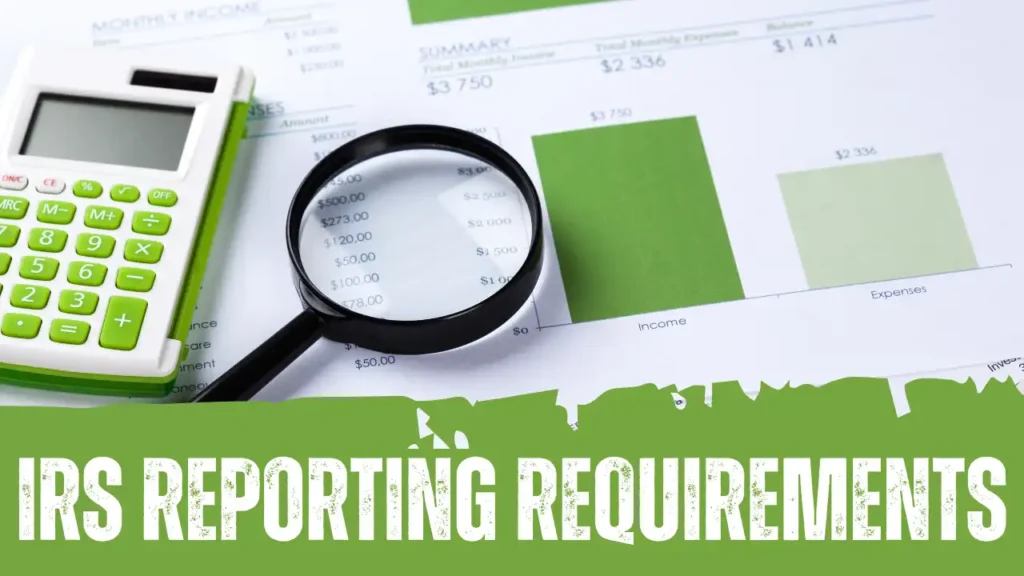Cryptocurrency taxation in the U.S. can feel like a puzzle, but understanding how the IRS treats digital assets makes it easier. Whether you’re a seasoned trader or a casual investor, knowing the tax implications of your transactions is crucial. Let’s break it down step by step.
Table of Contents
How to Classify Crypto Taxes:

1. How the IRS Classifies Cryptocurrency
The IRS considers cryptocurrency as property, not currency. This means that when you buy, sell, or exchange crypto, you’re dealing with capital assets, similar to stocks or real estate.
Why does this matter? Because it determines how your transactions are taxed. Gains from crypto are subject to capital gains tax, while crypto received as income is taxed as ordinary income.
2. Recognizing Taxable and Non-Taxable Events
Not every crypto transaction leads to a tax bill. Let’s break it down.
Taxable Events Include:
Selling Cryptocurrency for Fiat Currency: Converting crypto to U.S. dollars or other fiat currencies.
Exchanging One Cryptocurrency for Another: Trading Bitcoin for Ethereum, for example.
Using Cryptocurrency to Purchase Goods or Services: Paying for a product or service with crypto.
Receiving Cryptocurrency as Payment: Being compensated in crypto for services rendered.
Mining or Staking Rewards: Receiving crypto through mining or staking activities.
Airdrops and Hard Forks: Receiving new tokens from events like airdrops or blockchain splits.
Non-Taxable Events Include: Holding Crypto – Simply keeping Bitcoin in your wallet? No tax implications.
Transferring Between Personal Wallets – Moving assets from Coinbase to MetaMask? No taxes, unless you pay fees in crypto.
3. Understanding Basis and Fair Market Value
When selling or exchanging crypto, two important figures determine your tax liability:
Basis – The price you paid for the crypto, including any fees.
Fair Market Value (FMV) – The dollar value of your crypto at the time of the transaction.
Example: If you bought 1 ETH for $2,000 and sold it for $3,500, your capital gain is $1,500 ($3,500 – $2,000). FMV is $3500.
4. Calculating Gains and Losses
To determine how much tax you owe, you must calculate your capital gain or loss:
Short-Term vs. Long-Term Capital Gains
Short-Term (held ≤ 1 year): Taxed at ordinary income rates (10%–37%).
Long-Term (held > 1 year): Taxed at lower capital gains rates (0%, 15%, or 20%).
Capital Gains/Losses: When you sell or exchange cryptocurrency held as a capital asset, you must calculate the gain or loss.
Short-Term: If held for one year or less, gains/losses are short-term.
Long-Term: If held for more than one year, gains/losses are long-term.
Crypto Tax Calculator Formula:
Gain or Loss = FMV at Sale/Exchange – Adjusted Basis
5. Reporting Crypto Income
When you receive cryptocurrency as salary, mining rewards, staking income, or other earnings, the IRS treats it as ordinary income. The amount you must report is based on the fair market value (FMV) of the crypto at the time you receive it.
Example Breakdown:
- Suppose you receive 0.1 BTC as payment.
- At the time you receive it, Bitcoin is worth $50,000 per BTC.
- To calculate your taxable income:
0.1 BTC × $50,000 = $5,000
This means you must report $5,000 as income on your tax return for that year.
Important: If you hold the BTC and later sell it for a higher price, you may also owe capital gains tax on the profit. Crypto income is taxed at your regular income tax rate, which depends on your total earnings. You should keep records of the date, value, and source of any crypto income for accurate reporting.
6. Keeping Records is Crucial
To stay compliant, detailed record-keeping is necessary. Keep track of:
- Purchase prices and dates
- Sale prices and dates
- Transaction types (trades, payments, etc.)
- Associated fees
- Wallet addresses involved
Using a crypto tax calculator helps you manage records effortlessly and ensures accuracy at tax time.
7. IRS Reporting Requirements

When filing your taxes, crypto transactions must be reported on:
Form 1040 – Answer the digital asset question.
Form 8949 – Report sales and exchanges.
Schedule D – Summarize capital gains and losses.
Schedule C – Report self-employment income paid in crypto.
More details on the IRS classification can be found here.
Trump’s Crypto Tax Proposal: A Game-Changer for U.S.-Based Crypto Companies

Capital Gains Tax Exemptions for U.S. Crypto Companies
In a groundbreaking move, the incoming Trump administration is pushing for a proposal that could eliminate capital gains taxes on cryptocurrencies issued by U.S.-based companies. If passed, this legislation would provide significant tax relief, making the U.S. a more attractive hub for blockchain innovation.
What This Means for Crypto Companies
Under this proposal, companies like Ripple, Cardano, Algorand, and Hedera—any crypto projects building in the U.S.—would benefit from a zero-capital gains tax environment. This policy shift could encourage both startups and established firms to expand operations within the country, giving the U.S. a competitive edge in the global crypto market.
A Pro-Crypto Shift in U.S. Policy
For years, crypto investors and developers have struggled under heavy regulatory pressure, including enforcement actions from the SEC and anti-crypto campaigns led by figures like Elizabeth Warren.
Policies such as Operation Choke Point 2.0 have made it increasingly difficult for banks to engage with crypto businesses. However, with a pro-crypto president and a Congress backing digital assets, the regulatory landscape is undergoing a dramatic shift.
The Impact on U.S. and Global Crypto Markets
The tax exemptions proposed by Trump’s administration could reshape the cryptocurrency market in several ways:
- Boosting U.S. Crypto Companies: Eliminating capital gains taxes would make American crypto projects more appealing to investors.
- Attracting International Businesses: Foreign crypto firms might consider relocating to the U.S. to benefit from the tax incentives.
- Challenging Foreign Cryptocurrencies: With U.S.-issued digital assets gaining tax advantages, non-U.S. cryptocurrencies could face competitive disadvantages, especially if their income is taxed at rates up to 37%.
Investor Reactions and Market Expectations
Crypto enthusiasts and financial experts are closely watching this proposal. If implemented, the policy could spark a surge in market activity, encouraging hesitant investors to enter the space. Given that tax on crypto gains has been a significant burden, this move could fuel the ongoing crypto super cycle until 2026.
How to Prepare for the Potential Tax Changes
If this proposal becomes law, crypto investors and businesses will need to reassess their tax strategies. Consulting with professionals on how to file crypto taxes (Reddit discussions are already heating up) or using a crypto tax calculator will be essential.
Additionally, businesses should stay updated on regulatory changes through crypto tax calculator product release notes to ensure compliance.
Crypto Taxes Categories (2024-2025)

Cryptocurrency taxation can be complicated, but understanding how the IRS treats digital assets is crucial to staying compliant and minimizing your tax liability. Whether you’re an investor, trader, or miner, the amount of tax on crypto gains you owe depends on factors like:
- The type of transaction (buying, selling, trading, or earning crypto).
- How long do you hold your crypto before selling?
- Your total taxable income for the year.
If you’re wondering about crypto tax rates for 2024 or how to file crypto taxes, this guide breaks everything down in simple terms.
How Crypto is Taxed in the U.S.?The IRS classifies cryptocurrency as property, meaning the same tax rules that apply to stocks or real estate also apply to crypto transactions. This means:
- If you sell or trade crypto for more than what you paid, you owe capital gains tax.
- If you receive crypto as payment, staking rewards, or mining rewards, it’s considered ordinary income, and you pay income tax on it.
Your holding period (how long you keep the crypto before selling) plays a huge role in how much tax you owe.
1. Capital Gains Tax on Crypto Transactions
Whenever you sell, trade, or spend cryptocurrency, you trigger a taxable event. Your profit (or loss) from these transactions is categorized as either short-term or long-term capital gains.
Short-Term Capital Gains (Held ≤ 1 Year)
- If you sell or trade crypto within one year of purchasing it, your profits are taxed as ordinary income.
- This means your gains are taxed at your regular federal income tax rate, which ranges from 10% to 37%, depending on your income.
- The tax applies to:
- Selling Bitcoin (BTC) or any other crypto for fiat (USD, EUR, etc.).
- Exchanging one cryptocurrency for another (e.g., trading Ethereum for Solana).
- Using crypto to buy goods or services (even a cup of coffee).
Why does this matter? Short-term gains are taxed at higher rates than long-term gains, so selling quickly could result in a bigger tax bill.
Long-Term Capital Gains (Held > 1 Year)
- If you hold crypto for more than one year before selling, your profits are taxed at reduced capital gains tax rates:
| Filing Status | 0% Tax Rate | 15% Tax Rate | 20% Tax Rate |
| Single Filers | Up to $47,025 | $47,026 to $518,900 | Over $518,900 |
| Married Filing Jointly | Up to $94,050 | $94,051 to $583,750 | Over $583,750 |
2. Crypto as Ordinary Income: Mining, Staking & Payments
Not all crypto transactions fall under capital gains tax. Some are considered ordinary income, meaning they are taxed at regular income tax rates (10% to 37%).
What’s Considered Ordinary Income? If you earn crypto in any of the following ways, it’s taxed as regular income:
Getting paid in crypto for freelance work, services, or employment.
Mining rewards (BTC, ETH, etc.).
Staking rewards (e.g., earning yield from staking Ethereum).
Airdrops and hard forks (free tokens you receive unexpectedly).
2024 Federal Income Tax Brackets (For Taxes Due in April 2025)
| Filing Status | 10% Rate | 12% Rate | 22% Rate | 24% Rate | 32% Rate | 35% Rate | 37% Rate |
| Single Filers | Up to $11,600 | $11,601 – $47,150 | $47,151 – $100,525 | $100,526 – $191,950 | $191,951 – $243,725 | $243,726 – $609,350 | Over $609,350 |
| Married Filing Jointly | Up to $23,200 | $23,201 – $94,300 | $94,301 – $201,050 | $201,051 – $383,900 | $383,901 – $487,450 | $487,451 – $731,200 | Over $731,200 |
3. How to File Crypto Taxes in 2025
The IRS now requires you to report all crypto transactions on your tax return. Here’s what you’ll need:
Form 1040 – Answer the digital asset question on your tax return.
Form 8949 – Report all crypto trades and sales.
Schedule D – Summarize your capital gains and losses.
Schedule C – If you’re self-employed and got paid in crypto, report it here.
Examples to Understand Taxations on Crypto Transactions
1. Short-Term vs. Long-Term Capital Gains on Crypto Transactions
Example 1: Short-Term Capital Gains Tax (Held for Less Than a Year)
John purchased 1 Bitcoin for $30000 in January 2024. Six months later, in July 2024, he decided to sell his Bitcoin for $45000. This transaction results in a capital gain of:
45000 – 30000 = 15000 profit
Since John held the Bitcoin for less than a year, the IRS considers this a short-term capital gain. These gains are taxed as ordinary income, meaning they follow the same tax brackets as John’s salary.
- John earns 80000 per year from his job, placing him in the 22 percent tax bracket
- His short-term crypto capital gains will also be taxed at this rate
Tax Due on Crypto Gain:
15000 x 22 percent = 3300 in taxes
Since short-term capital gains are taxed at higher rates, frequent trading may lead to a higher tax liability.
Example 2: Long-Term Capital Gains Tax (Held for More Than a Year)
John buys 1 Bitcoin at 30000 in January 2023. He holds onto it for more than two years and sells it in March 2025 for 45000. His capital gain remains the same:
45000 – 30000 = 15000 profit
Since John held the Bitcoin for more than a year, he qualifies for long-term capital gains tax rates, which are lower than short-term rates.
- If his total income is below 47025, he pays zero percent tax
- If his income falls between 47026 and 518900, he pays a 15 percent tax
- If his income exceeds 518900, he pays a 20 percent tax
John earns 80000 per year, placing him in the 15 percent tax bracket.
Tax Due on Crypto Gain:
15000 x 15 percent = 2250 in taxes
By holding his Bitcoin for more than a year, John saves 1050 in taxes compared to short-term gains.
2. Crypto Used for Payments and Taxable Events
Example 3: Buying a Laptop with Crypto
Sarah buys 0.1 Bitcoin when the price is 40000 per BTC. After six months, Bitcoin rises to 50000 per BTC. She then purchases a laptop using 0.1 Bitcoin, which is worth 5000 at the time of purchase.
Capital Gain Calculation:
(0.1 x 50000) – (0.1 x 40000) = 5000 – 4000 = 1000 capital gain
Since Sarah is in the 24 percent tax bracket, her taxable amount is:
1000 x 24 percent = 240 in taxes
This example highlights that spending crypto is a taxable event. The IRS treats this as if Sarah sold her Bitcoin first, meaning she must report and pay taxes on the gain.
3. Crypto Mining and Staking Rewards Taxation
Example 4: Crypto Mining Tax
Alex is a Bitcoin miner and received 0.5 BTC as a mining reward on March 1, 2024, when Bitcoin was valued at 42000. The IRS considers mining rewards as taxable income at the fair market value on the day received.
Taxable Income Calculation:
0.5 BTC x 42000 = 21000 taxable income
Since Alex falls into the 22 percent tax bracket, his tax obligation is:
21000 x 22 percent = 4620 in income taxes
Later in December 2024, Alex sells the 0.5 BTC when Bitcoin is worth 50000.
Capital Gain Calculation:
(0.5 x 50000) – (0.5 x 42000) = 25000 – 21000 = 4000 capital gain
- If Alex sells the BTC within a year, it is taxed as ordinary income at 22 percent: 880 tax
- If he waits more than a year, he qualifies for long-term capital gains tax at 15 percent: 600 tax
Holding mined crypto for over a year before selling can significantly reduce tax liability.
4. Crypto Received as Salary or Payment for Work
Example 5: Getting Paid in Crypto
Lisa is a freelancer who accepts 0.2 Ethereum for services in March 2024, when Ethereum is worth 3000 per coin. The IRS classifies crypto payments for work as ordinary income.
Taxable Income Calculation:
0.2 x 3000 = 600 taxable income
Lisa falls into the 22 percent income tax bracket, so her tax liability is:
600 x 22 percent = 132 in income tax
Later in December 2024, Lisa sells the 0.2 Ethereum when its price increases to 4000.
Capital Gain Calculation:
(0.2 x 4000) – (0.2 x 3000) = 800 – 600 = 200 gain
- If she sells within a year, the gain is taxed at her 22 percent income tax rate: 44 tax
- If she holds for over a year, the gain is taxed at 15 percent: 30 tax
This shows how getting paid in crypto results in two taxable events—once as income and again upon selling.
5. Crypto Airdrops and Hard Forks Taxation
Example 6: Airdrop Taxation
Mark receives an airdrop of 100 tokens, each valued at 2. The IRS treats airdrops as ordinary income on the day they are received.
Taxable Income Calculation:
100 x 2 = 200 taxable income
Since Mark is in the 22 percent tax bracket, his tax obligation is:
200 x 22 percent = 44 in tax
Later, he sells his tokens when their value increases to 5 each.
Capital Gain Calculation:
(100 x 5) – (100 x 2) = 500 – 200 = 300 capital gain
- If he sells within a year, he pays 22 percent tax: 66 tax
- If he holds for more than a year, he pays 15 percent tax: 45 tax
This example emphasizes that airdrops are taxed immediately upon receipt and again when sold.
6. Crypto Losses and Tax Deductions
Example 7: Offsetting Crypto Losses
Emma purchases 2 Ethereum at 4000 each, totaling an investment of 8000. The price drops, and she decides to sell both ETH for 2500 each, receiving 5000 in return.
Total Loss Calculation:
8000 – 5000 = 3000 capital loss
The IRS allows taxpayers to deduct up to 3000 per year from their taxable income using capital losses.
If Emma earns 60000 per year, she can reduce her taxable income to 57000, leading to tax savings:
3000 x 22 percent = 660 in tax savings
If her capital losses exceed 3000, she can carry the remaining losses forward to future tax years.
How to Reduce Crypto Taxes: Smart Strategies for Investors

Cryptocurrency taxation can be complex, but with the right strategies, you can legally minimize your tax burden and keep more of your gains. Whether you’re an investor, trader, or someone receiving crypto as payment, understanding tax optimization techniques can save you thousands of dollars.
In this guide, we’ll explore key strategies to reduce your crypto taxes, from holding for long-term gains to leveraging tax-loss harvesting and tax-advantaged accounts.
1. Hold Your Crypto for Over a Year to Benefit from Long-Term Capital Gains Rates
One of the most effective ways to reduce your crypto tax liability is by holding your assets for more than a year before selling. In the U.S., cryptocurrency is considered a capital asset, meaning it is subject to capital gains tax when sold at a profit.
Short-Term vs. Long-Term Capital Gains Tax
- Short-term capital gains (assets held for one year or less) are taxed as ordinary income, which can be as high as 37% depending on your tax bracket.
- Long-term capital gains (assets held for more than one year) are taxed at a reduced rate of 0%, 15%, or 20%, depending on your taxable income.
Example:
- If you buy Bitcoin (BTC) at $30,000 and sell it six months later for $45,000, your $15,000 profit is taxed at your income tax rate (e.g., 22%).
- However, if you hold it for over a year, you may only pay a 15% tax rate instead of 22%, saving you hundreds or even thousands in taxes.
Best Practice:
- Before selling, check your holding period. If you’re close to the one-year mark, consider waiting to qualify for long-term capital gains tax rates.
2. Harvest Tax Losses by Selling at a Loss to Offset Gains
Tax-loss harvesting is a strategy where you sell crypto at a loss to offset capital gains from other investments. Since cryptocurrency is classified as property by the IRS, it qualifies for this strategy.
How It Works:
- If you made a $10,000 profit selling Bitcoin but lost $5,000 on Ethereum, you can offset your Bitcoin gains with Ethereum losses. Your net taxable gain would be $5,000 instead of $10,000, reducing your overall tax bill.
- You can also deduct up to $3,000 in capital losses from your ordinary income if your total losses exceed gains.
No Wash Sale Rule for Crypto (Yet)
Unlike stocks, which are subject to the 30-day wash sale rule (prohibiting repurchase within 30 days of selling at a loss), cryptocurrency currently does not have this restriction. This means you can sell your losing crypto asset, claim the loss, and repurchase it immediately without losing out on future gains.
Best Practice:
Toward the end of the year, review your portfolio and strategically sell underperforming assets to minimize taxable gains.
Work with a crypto tax professional to ensure you maximize deductions while staying compliant.
3. Use Tax-Advantaged Accounts to Reduce Taxable Events
If available, investing in crypto through tax-advantaged accounts like self-directed IRAs or 401(k)s can shield your investments from immediate taxation.
Tax-Advantaged Crypto Accounts:
- Self-Directed IRAs (SDIRAs) – These allow you to invest in crypto while benefiting from tax-deferred or tax-free growth (Roth IRA).
- 401(k) Plans with Crypto Exposure – Some employer-sponsored plans allow crypto investments, deferring taxes until withdrawal.
Example:
- If you invest $10,000 in Bitcoin through a Roth IRA and it grows to $50,000, you can withdraw it tax-free in retirement.
- In contrast, if you held that Bitcoin in a regular brokerage account, you’d owe capital gains tax when selling.
Best Practice:
- Research self-directed IRAs that allow crypto investments.
- If your employer offers a 401(k) with crypto exposure, consider allocating a portion of your investments there to defer taxes.
4. Track All Transactions and Consult a Tax Professional
Keeping accurate records of all crypto transactions is essential for reducing taxes and staying compliant. Every trade, purchase, and transfer may have tax implications, and failure to report accurately can lead to penalties.
Why Record-Keeping Matters:
- Exchanges don’t always provide complete tax reports, making self-tracking crucial.
- Every transaction—including staking rewards, mining income, and DeFi earnings—needs to be documented for tax purposes.
Use Crypto Tax Software for Easy Reporting
Several tax software solutions integrate with exchanges and wallets to automatically track gains, losses, and taxable events:
- CoinTracker
- Koinly
- TokenTax
- CoinLedger
Consult a Tax Professional for Optimization
Crypto tax laws are evolving, and working with a tax professional specializing in digital assets can help you:
- Find legal ways to reduce tax liability.
- Avoid common tax mistakes that could trigger an IRS audit.
- Optimize your portfolio for future tax efficiency.
Best Practice:
- Maintain records of all crypto transactions, including timestamps, cost basis, and exchange rates at the time of trade.
- Use crypto tax software or hire a professional to ensure compliance and optimize deductions.
Final Thoughts: Optimize Your Crypto Tax Strategy
Crypto taxation can be complicated, but understanding the key principles can help you stay compliant and reduce your tax burden. One of the most important factors is the holding period—keeping your crypto for over a year qualifies you for lower long-term capital gains tax rates while selling within a year results in higher short-term tax rates. Being strategic about when you sell can make a significant difference in your overall tax liability.
Another crucial aspect is record-keeping. The IRS requires detailed documentation of every crypto transaction, including purchase and sale dates, amounts, and fair market values at the time of each trade.
Without proper records, calculating gains, losses, and tax liabilities becomes difficult, increasing the risk of errors or audits. Using crypto tax software or spreadsheets can help streamline this process and ensure accuracy.
In addition to federal taxes, state-level taxation can also impact your crypto earnings.
Some states, like California and New York, impose capital gains taxes on cryptocurrency, while others may have more favorable regulations. Since tax laws vary widely across different states, checking your local regulations is essential to avoid unexpected tax bills.
Tax-loss harvesting is another strategy that can help reduce your taxable gains. Selling crypto at a loss allows you to offset capital gains from other investments, potentially lowering your total tax liability.
However, be mindful of wash sale rules, which may apply to crypto transactions if new regulations are introduced. Staying updated on tax laws will help you use this strategy effectively.
Exploring tax-advantaged accounts could be beneficial for those looking to further optimize their tax situation. Some jurisdictions allow crypto investments within certain retirement accounts, which can defer or even eliminate taxes on gains. While options like these may not be widely available, it’s worth investigating potential opportunities in your country or state.
Given the ever-changing regulatory landscape, consulting a tax professional is highly recommended. Tax laws surrounding cryptocurrency are still evolving, and professional guidance can help you navigate complexities, identify deductions, and ensure full compliance. Additionally, using reputable tax software can automate calculations, making tax reporting more manageable.
As discussions around cryptocurrency taxation continue, policies such as Trump’s proposed crypto tax plan could reshape the industry, providing advantages for U.S.-based projects while potentially facing resistance from other countries. Keeping up with these developments is crucial for investors, traders, and businesses operating in the crypto space.
For the latest updates on crypto taxation, regulatory changes, and tools like our upcoming crypto tax calculator, stay connected with Pro2Crypto.com


1 thought on “Trump Crypto Taxes & Crypto Tax Calculator: Rules, Strategies & Savings”